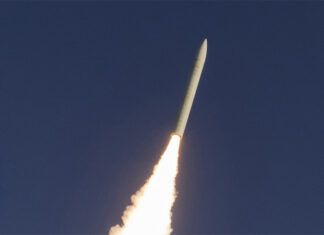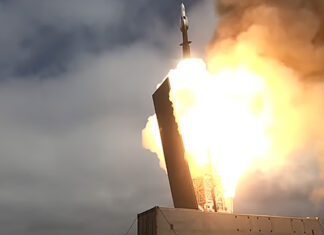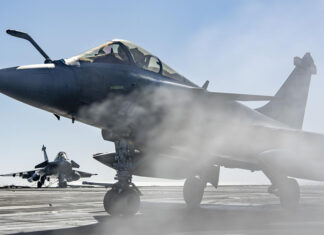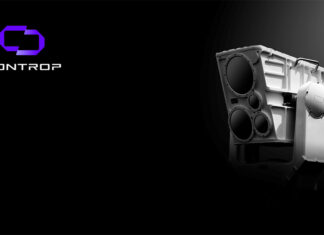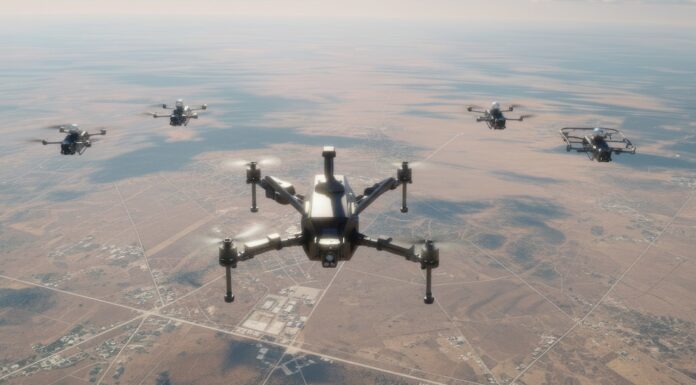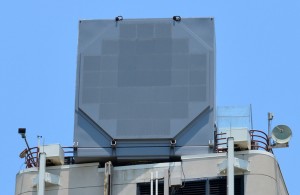
The U.S. Navy and Raytheon Company have completed the critical design review (CDR) of the AN/SPY-6(V) Air and Missile Defense Radar (AMDR). This radar will be installed on US Navy DDG-51 Flight III missile destroyers, improving their fighting and self-defense capabilities. The company said the Engineering and Manufacturing Development (EMD) phase of the program continues and is now more than 40 percent complete.
As a scalable radar, built with Radar Modular Assemblies (RMA) building blocks, AMDR can be grouped to form any size radar aperture, either smaller or larger than currently fielded radars. With much larger arrays, AMDR, is said to be at least 30-times more sensitive than radars configured on existing DDG 51 Arleigh Burke-class destroyers. The new radar can simultaneously handle over 30 times the targets than existing AN/SPY-1D(V), to counter large and complex raids. Using adaptive digital beamforming and reprogrammable radar signal/data processing functionality enables users to rapidly adapt to new missions or emerging threats.
 The RMAs are leveraging Gallium Nitride (GaN) technology to optimize power in a smaller size and using less space, power and cooling than older technology would require for the same performance. The first Engineering Development Model production-representative Radar Modular Assembly (RMA) is currently undergoing testing in the risk-reduction pilot array at the company’s Near Field Range in Sudbury, Mass.
The RMAs are leveraging Gallium Nitride (GaN) technology to optimize power in a smaller size and using less space, power and cooling than older technology would require for the same performance. The first Engineering Development Model production-representative Radar Modular Assembly (RMA) is currently undergoing testing in the risk-reduction pilot array at the company’s Near Field Range in Sudbury, Mass.
“With customer validation in hand, we will now advance production, driving toward the ultimate – and timely – delivery of this highly capable and much-needed integrated air and missile defense radar capability to the DDG 51 Flight III destroyer.” said Raytheon’s Kevin Peppe, vice president of Integrated Defense Systems’ Seapower Capability Systems business area. The first Flight III ship is scheduled to be the second of two destroyers to be funded in 2016.
Raytheon is developing the new radar under a $385.7 million cost-plus contract awarded by the Navy in 2013.





